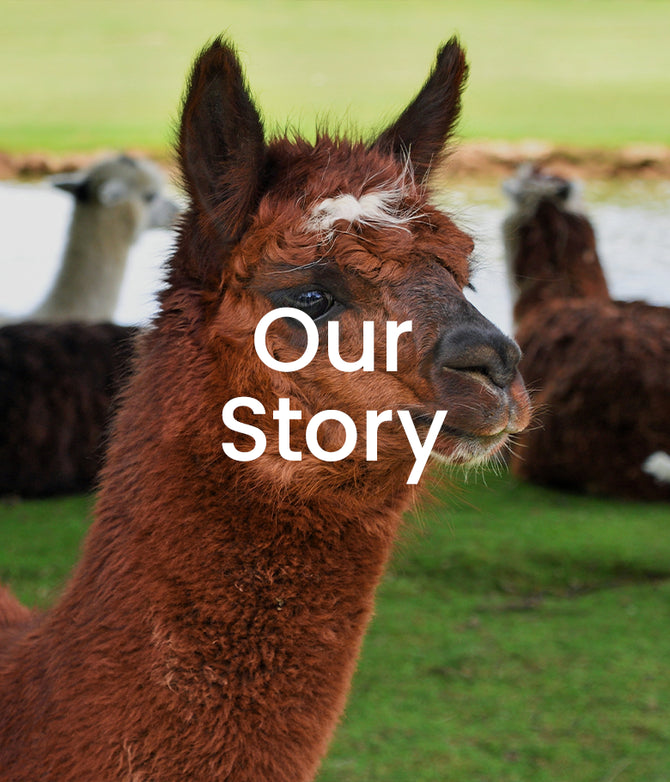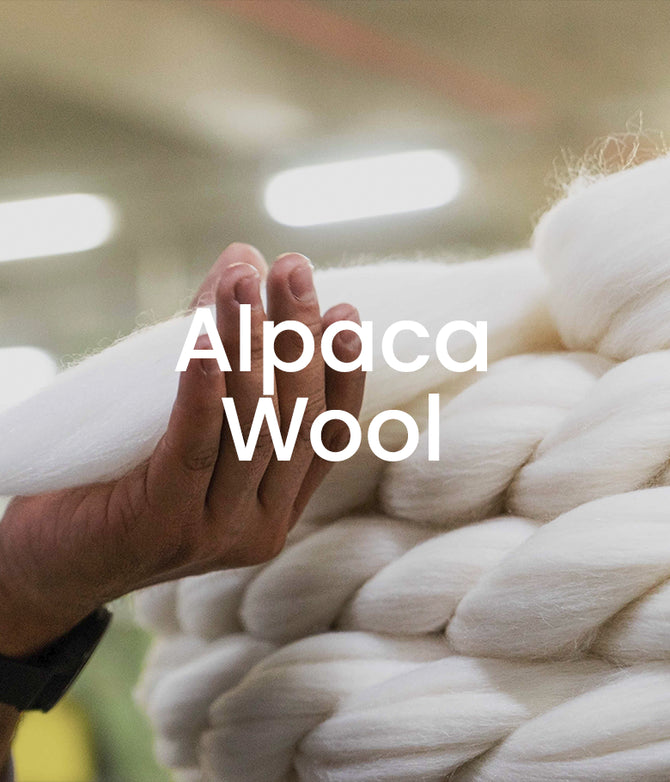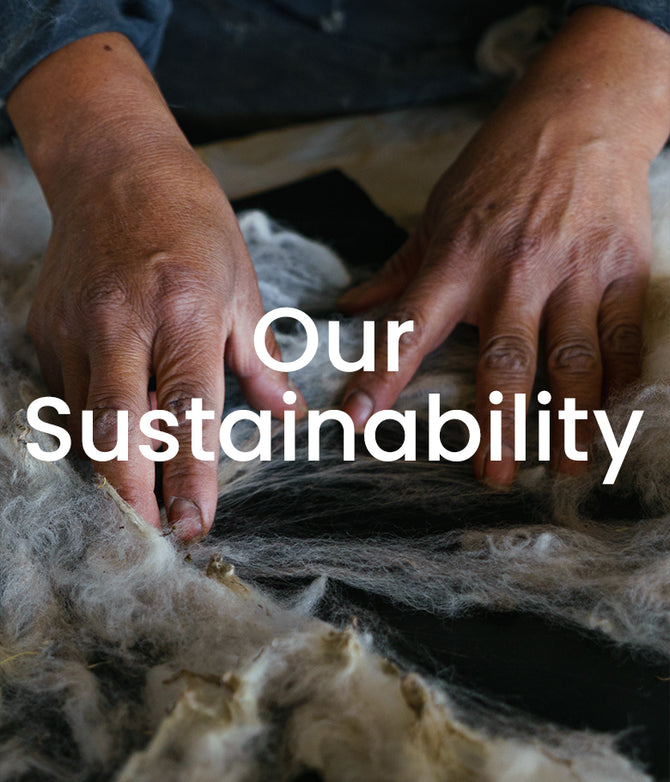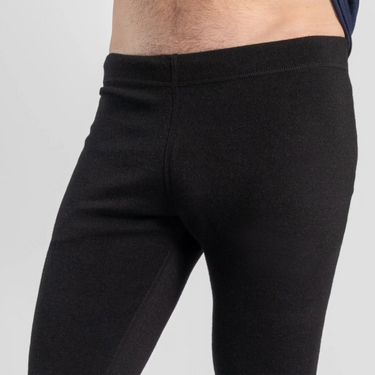World Wetlands Day:
Safeguarding Nature's Outdoor Defenders
Published Feb 2, 2025
Reading time: 6 minutes
On February 2, World Wetlands Day is celebrated globally to honor the essential role wetlands play in the Earth's ecosystems. Wetlands, covering just 6% of the Earth’s land surface, support 40% of all plant and animal species, including migratory birds and aquatic life [1]. Despite their importance, these vital ecosystems are rapidly disappearing—posing a threat to biodiversity, climate regulation, and the outdoor spaces we cherish [1,2]. This global event urges us to take action, acknowledging that wetlands are crucial not only for the natural world but also for the outdoor lifestyles we enjoy, from hiking to fishing and beyond.
Wetlands: The Heartbeat of Outdoor Ecosystems
Wetlands are unique environments where land is regularly or permanently covered by water—fresh, brackish, or saline—creating diverse ecosystems. They include marshes, swamps, and peatlands, all of which serve as vital habitats for countless species. Wetlands are nature’s own water filtration systems, effectively described as the “kidneys of the landscape” [2,3,4]. In these spaces, plants and animals have evolved to thrive in conditions where water and land meet.
For outdoor enthusiasts, these areas offer biodiversity hotspots and some of the most ecologically diverse places on the planet. Wetlands support ecosystems with more than 10% of all known animal species and approximately 50% of all fish species [2]. They are also essential to millions of people who rely on them for food, clean water and their livelihoods—1 in 8 people in the world rely on wetland resources [1].

Picture by Richard Sagredo.
The Role of Wetlands in Carbon Sequestration and Climate Action
Perhaps the most crucial yet often overlooked role of wetlands is their ability to store carbon. Wetlands hold 20-30% of the world’s carbon, despite covering just a fraction of the planet’s surface [4,5]. This makes them the most effective ecosystems in the fight against climate change, as they act as natural carbon sinks, absorbing more carbon dioxide than they release [5,6].
In fact, wetlands play a significant role in regulating greenhouse gases like methane, carbon dioxide, and nitrous oxide—key contributors to global warming. While wetlands do release methane—a potent greenhouse gas—, they absorb far more carbon dioxide. When these ecosystems are damaged or drained, however, the stored carbon is released back into the atmosphere, exacerbating climate change. This makes the conservation of wetlands all the more critical for maintaining a healthy environment for outdoor activities like hiking, kayaking, and fishing, which are directly impacted by climate disruptions [4,5,6,7].
Let's think about it: every degree Celsius that the planet's temperature increases can mean an acceleration in the melting of glaciers, which causes sea levels to rise. While it would make sports and outdoor activities impossible, as we mentioned, the worst part would be for island countries, which could gradually disappear.
Wetlands: Nature’s Water Treatment Systems
Beyond carbon storage, wetlands serve as invaluable natural water purifiers. They trap pollutants, including phosphorus, heavy metals, and other contaminants, ensuring that water remains clean for both ecosystems and human communities. For example, wetlands can remove harmful substances from water sources that feed into rivers, lakes, and reservoirs used by millions of people worldwide [6,7,8].
New York City, for instance, found that purchasing and preserving wetland areas around its reservoirs saved the city billions of dollars in water treatment infrastructure [2]. By utilizing these natural filtration systems, cities and outdoor spaces alike benefit from cleaner water without the need for costly, energy-intensive treatment processes.

New York's Wastewater Treatment Infrastructure. Picture by Annj AD.
Wetlands as Natural Defenders Against Extreme Weather
As outdoor adventurers know, extreme weather events are becoming more frequent and severe due to climate change. Wetlands play a crucial role in protecting against these disasters. Their ability to absorb and store excess water helps prevent flooding, especially in areas prone to heavy rainfall and storms. In coastal areas, wetlands act as buffers, mitigating the impacts of storm surges, erosion, and rising sea levels [5,9,10].
For outdoor sports like kayaking, fishing, and hiking along the coast, healthy wetlands provide protection and enhance the beauty and safety of these natural environments. Wetlands also stabilize shorelines, helping to preserve the landscapes that many of us enjoy for recreation and conservation [5,7,9].
At Arms of Andes we make our gear from 100% Royal Alpaca Wool of 18-18.5 microns.
Half-ZipWomen's Alpaca Wool Joggers
300 LightweightMen's Alpaca Wool Long Sleeve Shirt
160 Ultralight

Relatedcontent
Bamboo:
A fast-growing plant often used for making sustainable products like toothbrushes and cutlery.
Biodegradable:
Materials that can break down naturally without harming the environment.
Bulk stores:
Shops where you can buy products in large quantities, often with minimal packaging.
Carbon footprint:
The total amount of greenhouse gases produced directly or indirectly by human activities.
Composting:
A process where organic waste decomposes into nutrient-rich material for gardening.
Ethically raised:
Livestock or poultry that is raised in humane and environmentally responsible ways.
Fast fashion:
Cheap, mass-produced clothing often linked to environmental and ethical issues.
Natural dyes:
Coloring substances derived from plants, animals, or minerals, used to color fabrics sustainably.
Microplastics in Wetlands: A Growing Environmental Threat
As the global pollution crisis continues to escalate, microplastics have emerged as a significant threat to wetlands. These tiny particles, often originating from urban runoff and wastewater, have been found in estuarine and freshwater wetlands worldwide. While wetlands serve as natural filters for microplastics, trapping them in their soils and plant materials, the long-term impacts of this pollution are still being studied [6,7,8,11].
Aquatic plants in wetlands may help filter microplastics by capturing them in their roots and leaves, preventing them from entering the food chain. However, microplastics in wetland soils can still disrupt plant and animal life, affecting everything from soil properties to microbial communities and plant growth. This growing concern underscores the importance of preserving the health of wetlands, which play a critical role in mitigating pollution in the environments we love to explore [6,7,8,11].

Scanning Electron Microscope (SEM) image of microplastic particles obtained from Cromhall integrated constructed wetland (ICW) with visible biofilm formation and surface defragmentation. Source: http://dx.doi.org/10.1016/j.scitotenv.2022.160113
The Challenges Facing Wetlands: A Call for Action
Despite their importance, wetlands are disappearing at an alarming rate—three times faster than forests. Over the past 50 years, an estimated 35% of the world’s wetlands have been lost. The primary drivers of wetland degradation include agricultural expansion, urban development, pollution, and climate change. Wetland loss directly affects outdoor spaces, reducing the availability of clean water and safe habitats for recreational activities [1,2].
To combat these threats, global conservation efforts are necessary to protect the remaining wetlands. Initiatives like the Ramsar Convention and UNESCO World Heritage sites are working to ensure the preservation of wetland ecosystems. International cooperation is critical for safeguarding the vital services wetlands provide, including water regulation, habitat for wildlife, and protection against climate impacts [9,12,13].
Arms of Andes’s Commitment to Protecting Outdoor Ecosystems
At Arms of Andes, sustainability is not just a principle—it’s a passion. As a brand dedicated to crafting high-performance outdoor clothing from the finest alpaca wool, we are committed to the protection of the natural environments we love and explore. Our clothing is designed to withstand the challenges of outdoor adventures, from mountain hikes to snowy expeditions, while minimizing our environmental footprint.
Just as we craft durable, sustainable outdoor gear, we believe in protecting the landscapes and ecosystems that make these activities possible. Arms of Andes’s mission aims to inspire our community to take action and support wetland conservation efforts worldwide.
Through education, awareness, and responsible practices, Arms of Andes is committed to preserving the natural wonders of the outdoors, including the wetlands that are vital to the health of our planet. By making thoughtful, eco-conscious choices, we can all contribute to a more sustainable future, where outdoor adventures and ecosystems thrive together. On World Wetlands Day, Arms of Andes stands with global efforts to protect these irreplaceable natural habitats, ensuring they remain for future generations of adventurers and nature lovers alike.

Picture by Richard Sagredo.

Glossarykeywords
Carbon Cycle:
It is the process by which carbon atoms move between the atmosphere, living organisms, and the Earth's surface.
Carbon Storage:
It is the process of capturing and storing carbon dioxide to reduce the amount of greenhouse gases in the atmosphere. This process is also known as carbon sequestration.
Drain:
Cause the water or other liquid in (something) to run out, leaving it empty, dry, or drier.
Ecosystem Services:
These are the benefits that ecosystems provide to human beings. They are the result of interactions between relief, climate and biodiversity.
Estuarines:
They are bodies of water where fresh water from rivers mixes with salt water from the sea. They are very productive ecosystems that are home to unique communities of plants and animals.
Freshwater Wetlands:
They are areas of land or water that are saturated with freshwater, either seasonally or permanently.
Global Warming:
Results from the increasing concentration of carbon dioxide (CO2) and other greenhouse gases that trap heat in the earth's
Greenhouse gas emissions (GHG):
Trap heat and keep the planet warmer than it would be without it.
Marshes:
It is a type of wetland, an area of land where water covers the ground for long periods of time.
Microplastics:
Tiny plastic particles, smaller than 5mm, found in the environment from the breakdown of larger plastics or industrial processes.
Mitigation:
It is the reduction of vulnerability, that is, the attenuation of potential damage to life and property caused by a geological, hydrological or health event.
Peatland:
They are terrestrial wetland ecosystems in which waterlogged conditions prevent plant material from fully decomposing.
Radiative Forcing:
Radiative forcing or climatic forcing is the difference between the insolation (sunlight) absorbed by the Earth and the energy radiated back.
Swamps:
They are wetlands with trees and shrubs
Wastewater Treatment Infrastructure (WWTI):
They are a network of pipes and facilities that collect and treat wastewater from homes, businesses, and industries
Glossarykeywords
Carbon Cycle:
It is the process by which carbon atoms move between the atmosphere, living organisms, and the Earth's surface.
Carbon Storage:
It is the process of capturing and storing carbon dioxide to reduce the amount of greenhouse gases in the atmosphere. This process is also known as carbon sequestration.
Ecosystem Services:
These are the benefits that ecosystems provide to human beings. They are the result of interactions between relief, climate and biodiversity.
Estuarines:
They are bodies of water where fresh water from rivers mixes with salt water from the sea. They are very productive ecosystems that are home to unique communities of plants and animals.
Freshwater Wetlands:
They are areas of land or water that are saturated with freshwater, either seasonally or permanently.
Marshes:
It is a type of wetland, an area of land where water covers the ground for long periods of time.
Microplastics:
Tiny plastic particles released from synthetic materials, polluting water and harming wildlife.
Mitigation:
It is the reduction of vulnerability, that is, the attenuation of potential damage to life and property caused by a geological, hydrological or health event.
Peatland:
They are terrestrial wetland ecosystems in which waterlogged conditions prevent plant material from fully decomposing.
Radiative Forcing:
Radiative forcing or climatic forcing is the difference between the insolation (sunlight) absorbed by the Earth and the energy radiated back.
Wastewater Treatment Infrastructure (WWTI):
They are a network of pipes and facilities that collect and treat wastewater from homes, businesses, and industries
At Arms of Andes we use the finest Royal Alpaca Wool sourced in the Peruvian Andes. The Andean alpacas naturally developed over thousands of years in harsh conditions in high altitudes, creating the perfect fiber for outdoor gear that helps you stay protected in all conditions. Discover our outdoor apparel.

In the textile industry, companies that produce garments made entirely from Merino wool typically use fibers that are 17.5 microns or finer to minimize any itchiness or roughness, [4] ensuring comfort for their customers. A study conducted by the Division of Dermatology at the University of Louisville in 2019 evaluated the effects of wearing these garments on individuals with skin sensitivities, such as atopic dermatitis or eczema. In the study, 25 participants wore only Merino wool garments of 17.5 microns for six weeks and cotton garments of 21 microns for six weeks more, while another group of 25 followed the reverse order. Participants reported significant changes when switching from cotton to Merino wool, with those who started in Merino wool experiencing a decrease in their eczema during the first weeks. [4]
| Properties | Royal Alpaca Wool | Cashmere | Merino Wool |
|---|---|---|---|
| Weight | Lightest | Light | Heavier |
| Fiber Structure | Semi-Hollow | Solid | Solid |
| Thermal Capacity | 5 x Warmer | 3 x Warmer | Warm |
| Water Retention | Absorbs 10% of weight | Shrinks in water | Absorbs 10%
of weight |
| UV Protection | Yes | Yes | Yes |
| Fiber Scales | Smoothest | Softest | Prickly |
| Microns (average) | 17.5 | 14 | 18 |
| Tensile Strength | Highest | Weak | High |
| Odor Resistance | Yes | Yes | Yes |
| Wrinkle Resistance | Yes | Yes | Yes |
| Hypoallergenic (Lanolin free) | Yes | Yes | No |
The Final Verdict: And the Winner Is...
After a comprehensive analysis of alpaca, merino, and cashmere, it's clear that cashmere, while undeniably luxurious, lacks the durability required for outdoor garments. However, it excels as a high-end fiber for special occasions and elegant attire.
In the head-to-head battle between alpaca and merino, alpaca emerges as the undisputed champion! Alpaca wool surpasses merino in warmth, lightness, softness, and strength. It's the ultimate choice for those seeking performance, comfort, and sustainability.
Alpaca wool (particularly the royal and baby alpaca fiber grades) is warm, and performs better than merino and other types of sheep's wool. This makes alpaca wool perfect for your outdoor clothing, slipper socks, and even underwear.

Alpaca wool (particularly the royal and baby alpaca fiber grades) is non-itchy, warm, and performs better than merino and other types of sheep's wool. This makes alpaca wool perfect for your outdoor clothing, slipper socks, and even underwear.

References:
[1] United Nations. World Wetlands Day [Internet]. 2025 [cited 2025 Jan 31]. Available from: https://www.un.org/en/observances/world-wetlands-day
[2] World Wildlife Fund. What is a wetland? And 8 other wetland facts [Internet]. 2025 [cited 2025 Jan 31]. Available from: https://www.worldwildlife.org/stories/what-is-a-wetland-and-8-other-wetland-facts
[3] Ramsar Convention Secretariat. Conservation of wetlands of India [Internet]. 2025 [cited 2025 Jan 31]. Available from: https://wgbis.ces.iisc.ac.in/energy/water/paper/conservation_wetlands/Conservation_of_wetlands_of_India.pdf
[4] Weber KP. Microbial community assessment in wetlands for water pollution control: Past, present, and future outlook. Water. 2016;8(11):503. doi: 10.3390/w8110503.
[5] Salimi S, Almuktar SAAAN, Scholz M. Impact of climate change on wetland ecosystems: A critical review of experimental wetlands. J Environ Manag. 2021;295:112160. doi: 10.1016/j.jenvman.2021.112160.
[6] Bydalek F, Ifayemi D, Reynolds L, et al. Microplastic dynamics in a free water surface constructed wetland. Sci Total Environ. 2022;838:160113. doi: 10.1016/j.scitotenv.2022.160113.
[7] Yu H, Qi W, Cao X, Hu J, Li Y, Peng J, Hu C, Qu J. Microplastic residues in wetland ecosystems: Do they truly threaten the plant-microbe-soil system? Environ Int. 2021;156:106708. doi: 10.1016/j.envint.2021.106708.
[8] Almeida CMR, Sáez-Zamacona I, Silva DM, Rodrigues SM, Pereira R, Ramos S. The role of estuarine wetlands (saltmarshes) in sediment microplastics retention. Water. 2023;15(7):1382. doi: 10.3390/w15071382.
[9] Haarstad K, Bavor HJ, Mæhlum T. Organic and metallic pollutants in water treatment and natural wetlands: a review. Water Sci Technol. 2012;65(1):76-99. doi: 10.2166/wst.2011.831.
[10] Mitsch W. Wetlands and climate change. Available from: https://www.researchgate.net/profile/William-Mitsch/publication/291586979_Wetlands_and_Climate_Change/links/56a6e8c808aeded22e3548e3/Wetlands-and-Climate-Change.pdf
[11] Calzadilla Cabrera D, Wang Q, Martín M, Oliver Rajadel N, Rousseau DPL, Hernández-Crespo C. Microplastics occurrence and fate in full-scale treatment wetlands. Water Res. 2023; 239:120106. doi: 10.1016/j.watres.2023.120106.
[12] UNESCO. World Heritage and Wetlands. UNESCO World Heritage Centre; 2023. Available from: https://whc.unesco.org/fr/actualites/2740






















